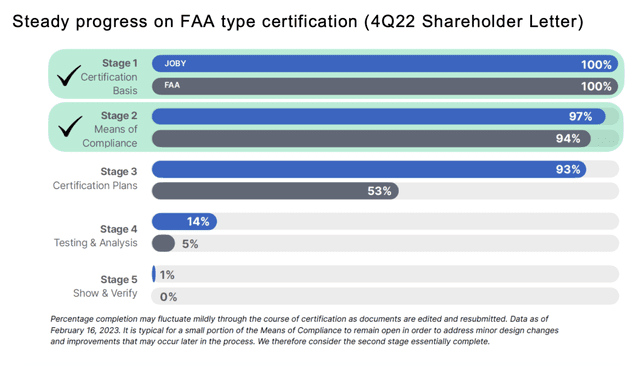

Oracle investors have seen a boost in stock performance recently, thanks to the company’s AI hype. This hype, coupled with Oracle’s multi-cloud shift, has fueled growth and outperformed the S&P 500. However, there are potential obstacles that may hinder further valuation re-rating, such as the company’s less efficient IaaS scale and legacy on-premise baggage. As ORCL’s price action becomes less constructive, it may be wise for investors to reduce their exposure and take profits. While Oracle boasts strong profitability, it is crucial to carefully consider its narrow economic moat and cloud growth opportunities. The market is well aware of the legacy headwinds Oracle faces and the potential risk of losing market share as customers migrate to the cloud.

Oracle’s AI Hype Boosts Stock Performance
Oracle Corporation, a prominent technology company, has witnessed a significant boost in its stock performance as a result of the hype surrounding its artificial intelligence (AI) initiatives. This surge in stock value has outperformed the broader market index, the S&P 500, indicating the growing confidence of Oracle investors in the company’s future prospects.
Recent Outperformance of Oracle Investors Compared to S&P 500
Oracle investors have been reaping the rewards of their investments, surpassing the performance of the S&P 500. This achievement is primarily attributed to the increasing interest and optimism surrounding Oracle’s AI-driven solutions. As the market becomes more aware of the potential benefits of AI technology, Oracle has positioned itself as a leading player in this space, enhancing its appeal to investors.
Factors Contributing to Oracle’s Stock Performance
Several factors have contributed to the impressive stock performance of Oracle. One of the key drivers is the company’s successful execution of its multi-cloud shift strategy. By diversifying its offerings across multiple cloud platforms, Oracle has been able to expand its customer base and tap into new revenue streams. This strategic move has not only bolstered the company’s financial performance but has also instilled confidence in investors regarding Oracle’s ability to adapt to the evolving cloud landscape.
Link Between AI Hype and Stock Performance
The excitement surrounding Oracle’s AI initiatives has undoubtedly played a significant role in its stock performance. As the advancements in AI technology continue to revolutionize various industries, companies with a strong AI focus, such as Oracle, are perceived as potential market leaders. The promise of AI-driven solutions to enhance efficiency, productivity, and decision-making capabilities has captured investors’ attention and contributed to Oracle’s stock value appreciation.
Oracle’s Multi-Cloud Shift Driving Growth
Oracle’s strategic shift towards a multi-cloud approach has been pivotal in driving its recent growth. The company’s adoption of this strategy has enabled it to tap into a diverse range of cloud service offerings, attracting a broader spectrum of customers. By providing customers with the flexibility to choose cloud providers that best suit their needs, Oracle has positioned itself as a versatile player in the cloud market.
Increased Adoption of Oracle’s Cloud Services
The increased adoption of Oracle’s cloud services has been instrumental in its growth trajectory. Organizations across various sectors are recognizing the advantages of migrating their data and applications to the cloud. Oracle’s comprehensive suite of cloud services, ranging from infrastructure-as-a-service (IaaS) to software-as-a-service (SaaS), has appealed to these organizations, offering them scalability, cost-effectiveness, and improved operational efficiency.
Potential Benefits of Multi-Cloud Strategy
Oracle’s multi-cloud strategy presents several potential benefits. By leveraging multiple cloud platforms, the company can harness the unique strengths and capabilities of each provider, offering customers a more tailored and comprehensive solution. Furthermore, a multi-cloud approach mitigates the risks associated with relying on a single provider, such as vendor lock-in and potential service disruptions. This flexibility and risk diversification contribute to Oracle’s value proposition and attract investors who recognize the growth potential of this strategy.

Challenges Posed by Oracle’s IaaS Scale
While Oracle’s multi-cloud shift has showcased its adaptability in the rapidly evolving cloud market, the company faces challenges due to its less efficient infrastructure-as-a-service (IaaS) scale. Compared to some of its competitors, Oracle’s IaaS offering may not be as cost-effective or scalable. This limitation poses a potential hindrance to the company’s ability to attract and retain customers, particularly those with extensive infrastructure requirements.
Impact of Legacy On-Premise Baggage on Valuation
Oracle’s legacy on-premise baggage represents another obstacle to its valuation re-rating. The company’s traditional software licensing model, while lucrative in the past, may no longer align with the changing preferences of customers who are increasingly moving towards cloud-based solutions. This legacy burden can undermine Oracle’s overall valuation, as investors consider the long-term sustainability and relevance of its business model.
Potential Limitations for Further Valuation Re-Rating
The combination of Oracle’s less efficient IaaS scale and legacy on-premise baggage presents potential limitations for further valuation re-rating. While the company’s AI initiatives and multi-cloud strategy have generated positive momentum, addressing these challenges effectively will be crucial for Oracle to sustain its growth trajectory and warrant further re-rating by investors.
Price Action Analysis of ORCL
An analysis of Oracle’s price action reveals a less constructive trend, indicating a need for careful consideration by investors. While the hype surrounding AI and the multi-cloud strategy has translated into stock value appreciation, it is essential to assess the underlying market dynamics and financial performance. Prudent investors may consider cutting exposure and taking profits to safeguard their investments.
Considering Oracle’s Strong Profitability
Despite the challenges and potential limitations discussed, Oracle boasts strong profitability that cannot be overlooked. The company has consistently delivered robust financial results, generating substantial revenue and profits. This profitability positions Oracle favorably among its peers and provides a solid foundation for sustained growth and investment returns.
Evaluating the Narrow Economic Moat
Evaluating Oracle’s narrow economic moat is paramount when considering its long-term prospects. While the company enjoys a prominent position in the enterprise software market, the rapidly evolving technology landscape and increasing competition pose a threat to Oracle’s market share. Investors should carefully analyze Oracle’s competitive advantages and its ability to defend against new entrants and disruptive technologies.
Assessing Cloud Growth Opportunities
Recognizing the potential for further growth in the cloud market is crucial for investors assessing Oracle’s long-term prospects. The increasing adoption of cloud services across industries presents an opportunity for Oracle to capitalize on its extensive cloud portfolio. By continuing to innovate and deliver tailored solutions, the company can unlock new revenue streams and expand its market presence.
Awareness of Oracle’s Legacy Headwinds
Investors need to be aware of Oracle’s legacy headwinds as they evaluate the company’s future performance. The ongoing transition from on-premise software to cloud-based solutions can result in customer migration challenges and potential market share loss. Understanding the risks associated with these headwinds is essential to make informed investment decisions.
Understanding the Risk of Market Share Loss
As customers increasingly prioritize cloud-based solutions, Oracle faces the risk of losing market share to competitors who have established a stronger presence in the cloud market. The ability to successfully retain existing customers and attract new ones will be critical for Oracle’s growth and sustaining its position as a market leader.
Impact of Customer Migration to the Cloud
The impact of customer migration to the cloud on Oracle’s business cannot be understated. The decision to transition from on-premise solutions to the cloud involves complex considerations, including potential disruption to existing operations and data security concerns. Oracle must demonstrate its ability to address these challenges effectively and provide a seamless migration experience to retain its customer base and remain competitive.
In conclusion, Oracle’s stock performance has been significantly influenced by the AI hype surrounding the company. While the multi-cloud shift has been a driving force behind its recent growth, challenges posed by its less efficient IaaS scale and legacy on-premise baggage must be mitigated to realize further valuation re-rating. Investors should carefully analyze Oracle’s price action, considering its strong profitability, narrow economic moat, and cloud growth opportunities. Additionally, awareness of Oracle’s legacy headwinds and market share risks is essential for informed investment decision-making.

RELATED POSTS
View all




